Himachal
Desi Ghee
A tO Z of
DESI COW GHEE
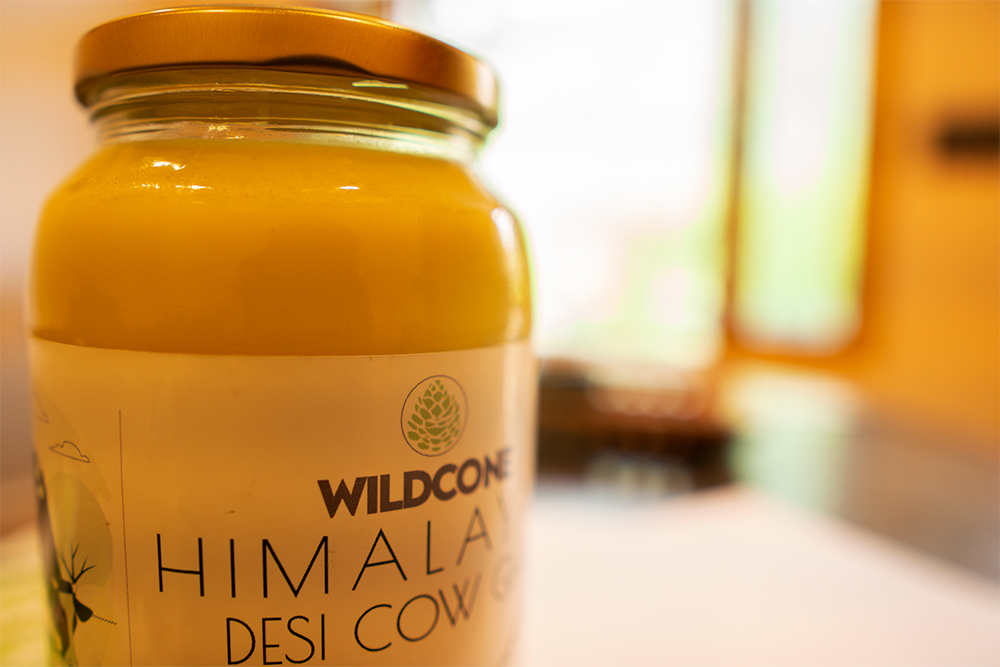
The Ayurveda calls cow ghee ‘the food of the gods.’ Here is all about the desi cow ghee and what gives it its miraculous powers to heal and cure…
The first thing we all know about pure desi cow ghee is that it can make any food taste super delicious due to its rich aroma and flavour. Desi cow ghee is a purely indigenous dairy product and has been an essential part of Indian kitchen since the Vedic times. It’s also considered sacred in our culture and is widely used in religious ceremonies. Desi cow ghee is highly nutritious with several health benefits and also forms the base of several Ayurvedic medicine formulations due to its therapeutic values. According to Ayurveda, desi ghee has miraculous powers.
Here is all about the desi cow ghee you ever wanted to know about including how is Pahari or mountain ghee any different or unique. We hope this article helps you in making the right choice while buying desi ghee:
What is desi ghee?
The word ‘ghee’ comes from the Sanskrit word ‘ghrta’ which means ‘bright’ or ‘to make bright.’ Desi ghee is clarified butter fat mainly made from the milk of cows or buffalos. Pure desi ghee made from cow milk is 99.9% fat but it’s healthy and unique fat. Healthy because of its medium chain fatty acids (MCFAs) that are directly absorbed by the liver providing energy and unique because of its rich flavour and taste.
What are the various components of desi cow ghee?

The desi ghee is mostly good fat (99.9%) including easy-to-digest saturated fat, monosaturated fat, medium chain fatty acids (MCFAs) and omega fatty acids. The desi ghee also contains fat-soluble vitamins A, D, E and K. These vitamins are absorbed by body only when consumed with high-fat diet like desi ghee. Anti-oxidants like beta-carotene and highly beneficial conjugated linoleic acid (CLA) are also present in the desi ghee. The desi cow ghee also contains butyric acid that gives it its distinctive and unique flavour.
How’s cow ghee made?
The desi ghee is made by extracting fat from the cow milk using different methods. But the best and the oldest method of desi ghee extraction in India is the desi or the traditional process. In the traditional Indian method, stored cow milk is converted into curd through fermentation by adding yogurt culture.
The curd is then hand-churned in an earthen pot and separated into butter and butter milk. The butter is then heated at low temperature in an open pan to allow the evaporation of water. The continuous slow stirring separates desi ghee from the rest of the butter ingredients and the moisture.
This method of hand-churning the curd to extract ghee is also called Bilona method. The name ‘Bilona’ comes from the fact that the wood churner used in the process is also known as ‘Bilona.
Why is desi cow ghee yellow in color?

Desi ghee is yellowish or more yellowish in colour because of Beta-carotene, a naturally occurring pigment in plants and fruits. The Beta-Carotene in desi ghee comes from cow’s diet — mainly grass and grains. If a cow is grass-fed, the amount of Beta-carotene in desi ghee will also be higher. It also depends upon the cow’s breed and the grazing season of the year. Beta-carotene is good for health and it is a rich source of vitamin A. On the other hand, buffalo ghee is white due to lack of carotene in its milk.
What causes granulation in desi cow ghee?
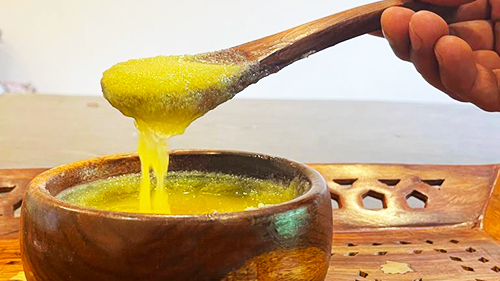
The unique pleasing aroma and granular texture of desi cow ghee can’t be replaced by any other fat. A quality granular ghee has granules equally disbursed. Granulation is the process of forming granules or grains. In desi cow ghee, it is caused by the formation of small crystals of fatty acids. Granulation depends on the presence of fatty acids, the temperature at which ghee is clarified and the rate at which it is cooled and stored before packing. Desi ghee with a desirable grainy texture can be produced under controlled conditions. Many consider granular texture of desi cow ghee to be evidence of quality and purity.
What is A2 ghee?
A2 ghee is considered healthier and more nutritious. It’s made from the A2 milk derived from the indigenous cows. There are two types of protein that are found in a cow’s milk: A1 beta-casein protein and A2 beta-casein protein. Casein is the largest group of protein found in cow milk that gives it its white colour. Various studies have claimed that A2 protein is better and healthier than A1 protein. Various researchers have also concluded that A1 milk is also difficult to digest for some people. A2 milk was first made popular and is still sold mostly in Australia, New Zealand, China and the United States. In India, the milk derived from native cows has mostly A2 protein.
Does cow feed affect the quality of desi ghee?
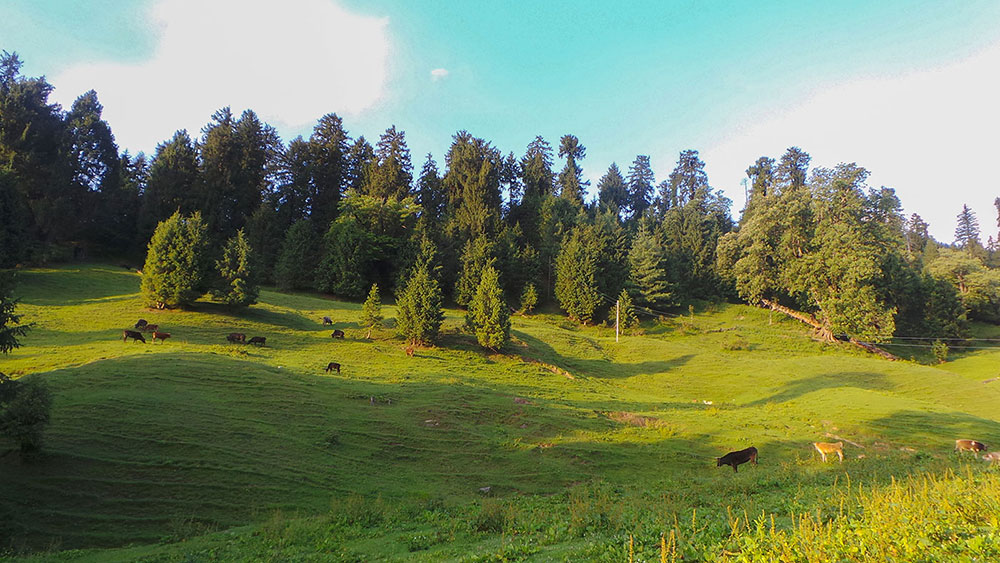
Yes. Milk composition and thereby the quality of desi ghee is affected by several factors including animal breed, age, health status, stage of lactation and the feed. Various studies have shown a significant rise in conjugated linoleic acid (CLA), a fatty acid having various health benefits, and unsaturated fatty acids, which are considered good fats, in milk derived from grass or pasture-fed cows. The pasture grass has high amount of protein, fibre and carbohydrates and the nutrients are passed on to milk and other dairy products including desi ghee.
What are the benefits of mountain or Pahari Desi ghee?
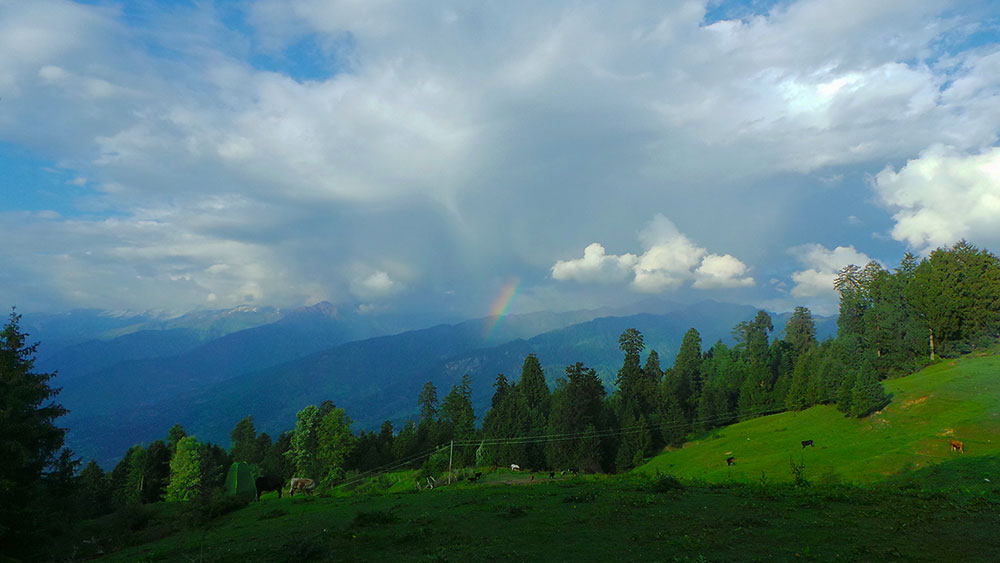
Himalayas are known for abundance of naturally-growing herbs and medicinal plants. The cows are fed natural grass of the meadows having therapeutic qualities and some of which get transferred to the milk and ghee. Studies have shown higher presence of mono unsaturated fatty acids (MUFA) and poly unsaturated fatty acids (PUFA), both of which are considered healthy and beneficial, in the milk derived from pasture-fed cows.
Such milk also has high percentage of b-carotene giving milk and ghee their yellowish colour. The ghee made from the milk of pasture-fed cows is yellower and tastier with rich texture and aroma.
What are the health benefits of consuming desi cow ghee?
There are many health benefits of desi cow ghee. It is anti-aging, builds immunity, helps lose weight and the desi ghee use makes your skin glow. The word ‘ghee’ comes from Sanskrit word ‘ghrit’ which means ‘bright’ or ‘to make bright.’ Ayurveda texts say that desi ghee also acts like an aphrodisiac.
According to researchers, Desi ghee helps prevent cancer and heart diseases because it is a good source of conjugated linoleic acid (CLA), a fatty acid having various health benefits. A research paper in the international Dairy Journal states that desi ghee is antioxidant (prevents cell damage), antiatherogenic (prevents formation of fatty deposits in arteries), anticarcinogenic (prevents cancer), antiadipogenic (prevents fatty tissue formation in body) and antidiabetic due to the presence of CLA. Desi ghee also improves immunity, is good for losing weight and building lean body mass. Desi ghee also helps treat constipation by improving digestion. According to Ayurvedic text Charaka Samhita, cow ghee promotes “memory, intellect, semen, agni, power of digestion and ojas.”
Can desi cow ghee be used for weight loss?
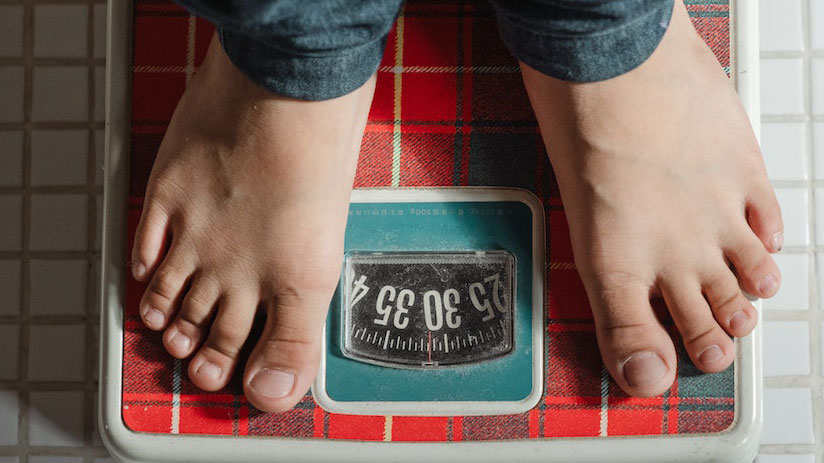
Yes. The desi cow ghee has anti-obesity properties due to the presence of easy-to-digest medium chain fatty acids (MCFAs). The MCFAs are absorbed directly by the liver and burned to provide energy, making desi cow ghee a good dietary recommendation for sports persons. According to researchers, it burns other fats in the body and thus helps reducing weight. This is why the desi cow ghee is also called a superior fat, better than all other oils and fats.
Is desi cow ghee suitable for people with lactose or casein intolerance?
Yes. Desi cow ghee is highly digestible due to the presence of butyric acid. Moreover, as all the milk solids and impurities are removed during the ghee-making process, it can be consumed safely by people with lactose or casein intolerance. The desi cow ghee is recommended to all-age people due to is high nutrition values and easy-to-digest quality.
Is desi cow ghee good for joint pain?

Long before desi ghee’s various components and nutrients were discovered in a lab, it was recommended for treating joint pain especially the knee pain. The desi cow ghee used to be and is still a must in all households for relieving the elderly and others of their knee joint pain. The desi ghee is believed to have properties that reduces inflammation of joints, lowers stiffness and adds flexibility. According to health experts, one teaspoon of pure desi cow ghee daily can help cure knee pain and arthritis. In Ayurveda, Asthisamharaka plant stem fried in desi ghee is recommended for treating joint pain.
How much desi cow ghee should I consume daily?
If desi ghee is consumed in moderate amount daily, it can be highly beneficial to your body and mind. Anything in excess is always harmful. One tablespoon of ghee (around 15 gm) has a calorie count of 112 kcal. One tablespoon for desi ghee per day per person is ideal. For a healthy person, who exercises daily, up to two tablespoons of desi ghee per day should be sufficient.
What is the shelf life of desi cow ghee?
Desi ghee has a comparatively higher shelf life due to absence of any moisture content. It’s because of the zero moisture that desi ghee is also known as anhydrous milk fat. Anhydrous literally means ‘without water.’ Desi ghee has a shelf life of one year and more if kept under room temperatures of 20 to 25 degrees centigrade. The cow ghee also has a longer shelf life than buffalo ghee due to higher natural antioxidants. It has also been seen that desi ghee derived from fresh cream/butter has a longer shelf life.
How best to store the desi ghee?
The desi home-made cow ghee has a shelf life of one year or longer. For daily use, the ghee should be kept in an airtight glass jar or steel container and away from direct sunlight. In summers, you can also keep the ghee in a fridge, which will change its form from liquid to solid. The desi cow ghee starts to melt at 20 to 30 degrees of Centigrade.
How to check the purity of desi cow ghee?

Many unscrupulous people adulterate desi ghee by adding cheaper animal fat and vegetable oils in the ghee they sell. While lab tests can easily tell whether a desi ghee is pure or adulterated but you can get a fairly good idea about the authenticity of a ghee by yourself. These are some of the tips to check whether the desi ghee is pure or adulterated:
*Pure ghee has almost 0 moisture.
*When melted pure ghee is clear, transparent without any foreign colouring matter.
*Pure desi cow ghee is yellowish. Buffalo ghee is whitish.
*Pure ghee has well-developed granules and equally-dispersed.
*Pure desi cow ghee has distinctive and pleasant aroma
What is the price range of desi cow ghee?
The desi cow ghee is the most valuable and superior fat with numerous nutritious, curative and healing properties. The desi ghee is also called a ‘super food’ and a ‘liquid gold’ due to its miraculous powers of curing many ailments. Because of all these factors, desi cow ghee, especially the home-made ghee, is sold at a premium price.
Why buy desi cow ghee online from the Wildcone?
The answer is simple. For purity and best quality. Our credibility is our asset. Our desi cow ghee is home-made in the mountains of Kullu Manali in Himachal Pradesh from the milk of cows that are fed and graze herb-rich pasture grass so that all the good nutrients of nature can pass on and are preserved in desi ghee. We use the traditional method of wood-churning, also known as Bilona method, to extract desi ghee. Before transporting, each and every desi ghee jar is checked for quality. Buy the Wildcone’s Himalayan Shudh Desi Ghee online.



